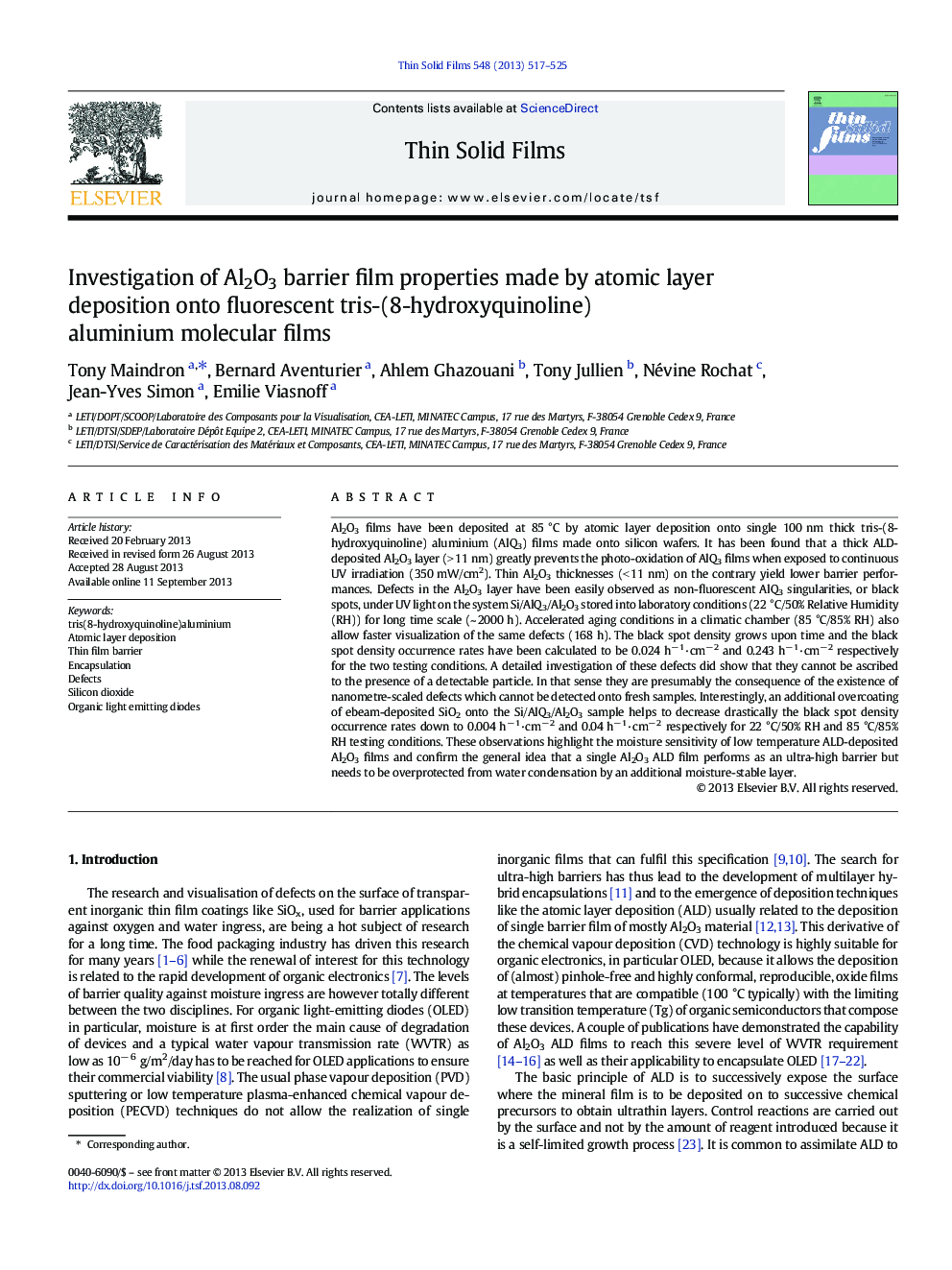| Article ID | Journal | Published Year | Pages | File Type |
|---|---|---|---|---|
| 1665858 | Thin Solid Films | 2013 | 9 Pages |
•Thin Al2O3 films have been deposited by atomic layer deposition onto organic films.•Defects in the Al2O3 barrier layer can be observed as black spots under UV light excitation.•Occurrence of black spots is enhanced for device stored in hot/wet conditions.
Al2O3 films have been deposited at 85 °C by atomic layer deposition onto single 100 nm thick tris-(8-hydroxyquinoline) aluminium (AlQ3) films made onto silicon wafers. It has been found that a thick ALD-deposited Al2O3 layer (> 11 nm) greatly prevents the photo-oxidation of AlQ3 films when exposed to continuous UV irradiation (350 mW/cm2). Thin Al2O3 thicknesses (< 11 nm) on the contrary yield lower barrier performances. Defects in the Al2O3 layer have been easily observed as non-fluorescent AlQ3 singularities, or black spots, under UV light on the system Si/AlQ3/Al2O3 stored into laboratory conditions (22 °C/50% Relative Humidity (RH)) for long time scale (~ 2000 h). Accelerated aging conditions in a climatic chamber (85 °C/85% RH) also allow faster visualization of the same defects (168 h). The black spot density grows upon time and the black spot density occurrence rates have been calculated to be 0.024 h− 1·cm− 2 and 0.243 h− 1·cm− 2 respectively for the two testing conditions. A detailed investigation of these defects did show that they cannot be ascribed to the presence of a detectable particle. In that sense they are presumably the consequence of the existence of nanometre-scaled defects which cannot be detected onto fresh samples. Interestingly, an additional overcoating of ebeam-deposited SiO2 onto the Si/AlQ3/Al2O3 sample helps to decrease drastically the black spot density occurrence rates down to 0.004 h− 1·cm− 2 and 0.04 h− 1·cm− 2 respectively for 22 °C/50% RH and 85 °C/85% RH testing conditions. These observations highlight the moisture sensitivity of low temperature ALD-deposited Al2O3 films and confirm the general idea that a single Al2O3 ALD film performs as an ultra-high barrier but needs to be overprotected from water condensation by an additional moisture-stable layer.
